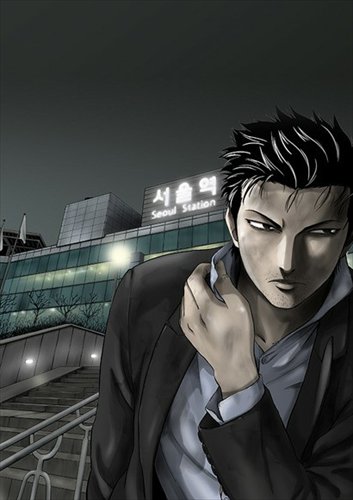South Korean comics see rising popularity in China

A panel from South Korean webtoon Last by Kang Hyong-gyo. Photo: CFP
If someone told you about a mysterious type of liquid that could let you alter your face and body, would you be interesting in reading more about it? A recent South Korean webtoon - a kind of online comic - featuring this type of "beauty water" has quickly gone viral on social media in China, attracting millions of readers looking to scare themselves silly.
This webtoon, Beauty Water, has also led many people to discover other works by Oh Seong-dae, a South Korean cartoonist specializing in horror stories. Actually the recent popularity of his work is just a reflection of the growing popularity of South Korean comic book artists in China.
For instance, in 2013, South Korean cartoonist Kang Do-young's Chasing Time generated huge buzz online. The comic tells the story of a group of people with different super powers who try to save people and prevent tragedies from happening.
Catching storylines
In addition to his talent at horror, Oh is also famous for the way his stories "think outside box." In Beauty Water, the protagonist is a young overweight woman who learns about a new liquid product that can allow people to change their looks just as well as plastic surgery. Ordering several bottles online, she uses the product to change herself into a completely new person. However, she soon finds that she has become completely addicted to the product. Later in the story she falls in love with a man who is also addicted to beauty water. However, instead of a happy ending she eventually melts into a puddle of beauty water, which her boyfriend uses to remake his knee.
The webtoon has became so popular in China that some netizens have started posting photos of their knees with faces drawn on them, or knees that naturally look like faces.
Oh's other works such as Wife's Memory, The Cursed Gallery and Things Happened in Africa are quite similar to Beauty Water, in that they all touch on current social issues in South Korea such as the country's cosmetic surgery culture, campus violence, young romance and lifestyles but with an unexpected twist.
In an interview with GNN News, Oh said that he often reads about social issues in the news and bases much of his work on real life events in the hopes that readers can learn something from his stories.
Adaptation fever
The interesting story lines and imagination that mix together characteristics from various genres in a single story has helped make South Korean comics a popular resource for film and television adaptations. Misaeng, also known as Incomplete Life, is a television series adapted from the webtoon of the same name. Featuring a group of graduates entering the workforce for the first time, the show has been seen as a breath of fresh air for a South Korean television industry dominated by shows about romance, revenge or other commonly seen themes.
MBC's Sunbi, is another example of a show that mixes genre. It tells a story similar to the classic Chinese folktale Butterfly Lovers only here the leading male character is a vampire.
JTBS's Last, TVN's Exgirl Club and SBS's Hyde, Jekyll, Me and Smell Girl are all comic adaptations, while many more such adaptations are on the way.
Platform separation
Cho Kyung-hun, a representative from South Korea's Animal Studio, said in an interview with mydriver.com that South Korea currently possesses the third biggest animation industry in the world after America and Japan. According to Cho, South Korea focuses on learning from international collaborations, while paying particular attention to creative planning and marketing, a strategy that has helped many businesses learn how to produce quality content as well as expand possibilities for spin-offs and franchises.
Chinese cartoonist Shijiufan told the Global Times that when he went to South Korea in 2009, he noticed that the market segmentation there was very clear: the teenage comic market was occupied by Japanese products while children's comic books were strictly regulated and could only be distributed through traditional channels. This lead to a situation where comics targeted at adults could only survive by heading to the Internet.
"This means that while the Japanese and Chinese industries were still competing in magazines and books, the South Korean industry was already developing a foundation for new media distribution," he said, adding that while Japanese comics are good at developing characters and plot, South Korean comics have an advantage when it comes to their boundless imagination and the fact that they are a product specially designed for a fast-food reading style.
"Many Japanese comic books also follow this format, but they can't break into the mainstream since they are still distributed through traditional channels such as magazines and books," said Shijiufan.
Deng Nan, an illustrator and publisher, shares a similar opinion. She finds that the layout of most South Korean comics she has seen are vertical. Unlike Japanese comic books whose typical layout may be difficult to follow for people who have never read a comic before, this South Korean layout makes them easy to read on smartphones, while drawing styles tend to be more realistic and less dramatic.
"The common themes and styles found in Japanese comic books haven't changed in a very long while," Deng told the Global Times.
Newspaper headline: Think outside the box